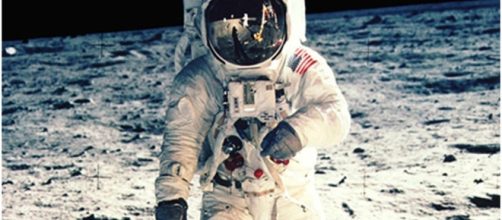For a man in his 80s, Buzz Aldrin, the second man to walk on the moon, gets around. His latest visit was to Vice President Mike Pence at the White House where, Space.com reported, they discussed things space. The meeting took place amidst stories of a developing space policy by the Trump administration that involve a return to the moon with commercial partnerships and rumors of budget cuts in store for NASA.
Aldrin has been a tireless advocate of human missions to Mars, though in recent years he has softened and has admitted the returning to the moon has some value as well, if for nothing else that world’s vast store of ice that can be refined into rocket fuel.
Pence, it is said, has been designated as the head of a revived White House Space Council, that would gather various departments and agencies into one place to coordinate space policy.
Aldrin has ventured close to the seat of power before. President Barack Obama used him as a political prop when he flew down to the Kennedy Space Center seven years ago to give the bad news-good news speech that America was not going back to the moon but would go to Mars several decades hence. That speech turned out to be a disaster for space exploration, resulting in a messy compromise called the Journey to Mars which was underfunded and directionless. Aldrin had set himself against some of his fellow Apollo astronauts, including his old shipmate, the late Neil Armstrong, who spoke out against the Obama policy.
It can be said that Pence treated Aldrin with more respect than Obama. The Apollo moonwalker had been consigned to the back of Air Force One during the flight from Washington to KSC. Pence listened to what Aldrin had to say on space policy, which was no doubt illuminating.
In the meantime, the winds of change are blowing through the aerospace community, only partly driven by NASA. The space agency is studying sending astronauts around the moon in 2019. SpaceX’s Elon Musk claims he will perform the same feat in 2018. Blue Origin’s Jeff Bezos stands ready to send robots to the lunar surface to start building a moon base. Bigelow Aerospace claims in can deploy a space station in lunar orbit by 2020, something NASA and her international partners are also mulling.

